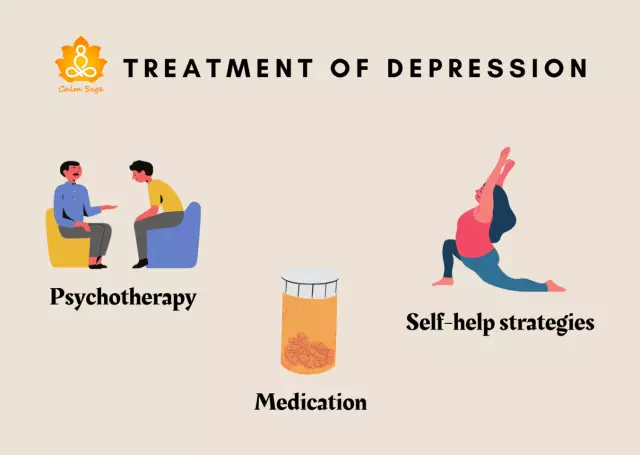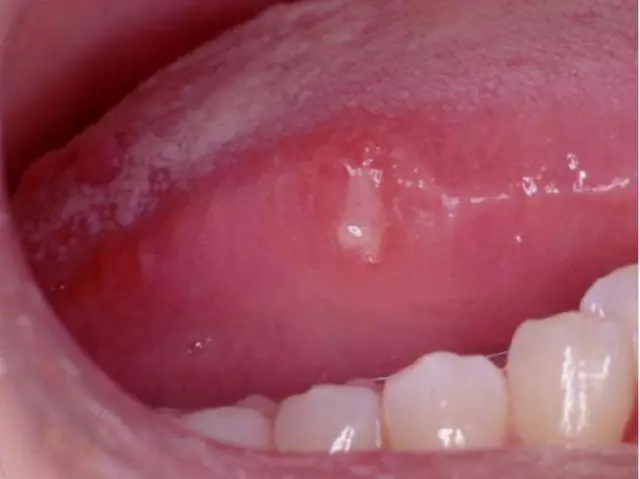- Author Rachel Wainwright [email protected].
- Public 2023-12-15 07:39.
- Last modified 2025-11-02 20:14.
Atherosclerosis
Brief description of the disease

Atherosclerosis is a chronic vascular pathology, accompanied by the formation of plaques, which significantly narrow the lumen of the vessels and lead to deformations of their walls. Currently, arterial atherosclerosis is one of the most common causes of circulatory disorders and, as a result, damage to internal organs.
The appearance of plaques is due to the accumulation of fat in the walls of blood vessels and the subsequent germination of connective tissue. As a rule, plaques appear in large arteries, but at the same time they affect absolutely all systems of the body, since our body is unable to function normally without proper blood flow. The reasons why a person manifests atherosclerosis of the brain or pathology of the vessels of the lower extremities are very diverse. Conditionally, all provoking factors can be divided into two large groups - variable and unchangeable. The latter include reasons that are considered inevitable:
- sex of a person - in women, atherosclerosis of the brain manifests itself on average 10 years later than in the stronger sex. At the same time, men suffer from vascular deformation about 4 times more often. The incidence balance is leveled only by the age of 50. At this age, atherosclerosis of the cerebral vessels is equally often diagnosed in both men and women, which is explained by significant hormonal changes in the female body;
- age - the older a person is, the higher the risk that he will develop atherosclerosis of the extremities or the brain;
- genetic predisposition - at the age of up to 50 years, mainly those people whose relatives have already suffered from atherosclerosis of the lower extremities or other forms of pathology suffer from vasoconstriction. In this case, the deformation of the vessels is more intense and painful.
Variable causes of atherosclerosis can and should be fought. The main remedies here are drugs and lifestyle changes. As for the reasons directly, we will give the most significant of them:
- smoking - no doubt, nicotine increases the risk of cardiovascular pathologies, which include atherosclerosis obliterans of the lower extremities. It has been proven that smoking contributes to the appearance of coronary heart disease, hyperlipidemia, hypertension and many other diseases. At the same time, due to its characteristics, tobacco smoke has the strongest effect on the blood vessels, and therefore on the entire body as a whole;
- obesity - excessive body weight and fat deposits on the walls of blood vessels - this is an increased risk of not only atherosclerosis, but also many other diseases, in particular, diabetes mellitus and arterial hypertension;
- violation of fat metabolism (dyslipidemia);
- diabetes;
- unhealthy diet - if a person eats mainly animal products, then by the age of 40-50, he will certainly have arterial atherosclerosis;
- a sedentary lifestyle leading to an imbalance in fats and carbohydrates;
- various infections, for example, chlamydial or cytomegalovirus, also increase the risk of developing cerebral atherosclerosis.
As mentioned above, you can deal with variable factors. This is necessary both for the prevention of atherosclerosis and for the prevention of other diseases of the cardiovascular system. The sooner you give up bad habits and unhealthy lifestyles, the better, because any disease is easier to prevent than to cure. Get some exercise: light jogging in the park, fitness classes, exercise bikes can significantly reduce the risk of disease.
Forms of atherosclerosis
Blood vessels pass through all parts of the human body. Therefore, pathological changes can occur anywhere. Depending on the place of localization, atherosclerosis of the brain and atherosclerosis of the vessels of the extremities are isolated.
- obliterating atherosclerosis of the lower extremities is one of the most common pathologies of the circulatory system. It manifests itself in the form of circulatory disorders and trophic changes in the tissues of the limbs, which often provokes the development of gangrene;
- atherosclerosis of the vessels of the brain - in this case, the blood vessels that feed the brain are affected. As a result of pathological changes, the risk of stroke and intracranial bleeding increases significantly. In addition, atherosclerosis of the cerebral vessels leads to movement disorders, disorders of vision, sensitivity and hearing, restless sleep and emotional breakdowns.
Regardless of the form of the disease, the treatment of atherosclerosis should be started as soon as possible. At the first unfavorable signs, you should immediately consult a doctor who will make an accurate diagnosis and plan a long-term, comprehensive treatment.
Atherosclerosis - symptoms and clinical picture

The symptoms of the disease are very diverse and depend both on the location of the pathology and on the degree of its development. In some cases, atherosclerosis affects several arteries at once, which also affects the intensity and severity of symptoms. As for the main signs of the disease, then, first of all, it should be noted such symptoms as:
- long-term pain at the site of vascular lesion, which tends to increase and decrease depending on the load and time of day;
- abdominal pain, dysfunction of the digestive tract in the case of atherosclerosis of the abdominal aorta;
- decreased memory, dizziness, decreased mental capacity, the appearance of paresis and paralysis, if atherosclerosis of the brain develops;
- increased frequency of angina attacks, the appearance of signs of an impending heart attack in atherosclerosis of the arteries of the heart.
Regardless of the place of development of the pathological process, in patients with a diagnosis of atherosclerosis, there is a violation of lipid metabolism, an increase in the amount of cholesterol and lipoproteins in the blood.
YouTube video related to the article:
The information is generalized and provided for informational purposes only. At the first sign of illness, see your doctor. Self-medication is hazardous to health!






